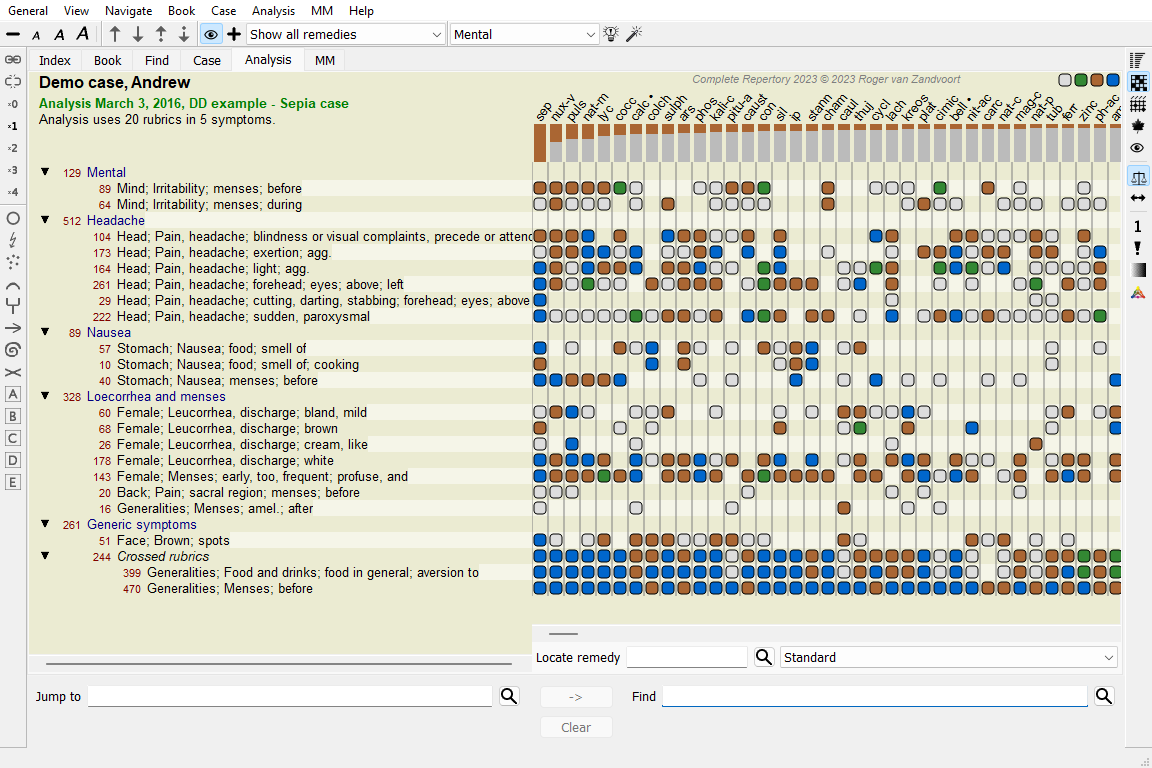
The next step after having made an analysis is generally the Differential Diagnosis. Based on the outcome of the analysis, a number of remedies are considered relevant and a differentiation has to be made among them.
There are a few different approaches to this.
Part of this study is to be done using the Materia Medica.
Most of the work can however be done using the contents of the repertory.
The special Differential Diagnosis function of the Analysis module helps you with that. It forms an easy to use connection between an analysis and the Find module's capability to differentiate remedies.
We'll show how it works by means of a few examples.
The following analysis can be found in the demo case Andrew, and is called DD example - Sepia case.
Although Sepia scores highest, this does not necessarily mean that it is the remedy to prescribe. In this case, we wanted to differentiate Sepia and Nux Vomica, because these remedies are complementary, and both score relatively high in the analysis.
Start the Differential Diagnosis. (Menu option Analysis / Differential diagnosis Wizard, toolbar button ![]() ).
).
A dialog opens:
In this dialog, you will notice 3 sections.
You can move this dialog to a convenient position on the screen, and leave it open to quickly modify the DD criteria. At any time, you can close it with the Close button.
Click the Apply button to start the DD with the selected criteria. The Find module will open, showing the most differentiating rubrics for the selected criteria.
The rubrics shown are now mostly Head symptoms, so we click the button
This gives you a good impression of the relevant differences between both remedies, for the selection of symptoms used in the analysis.
Since the results are shown in the Find module, you can immediately add relevant rubrics to your analysis, and thus modify the outcome of the analysis in accordance with the new information provided.
The following analysis can be found in the demo case Andrew, and is called DD example - Ferrum case.
We now leave it up to you to experiment with the options to select specific symptoms and rubric types, and see how that changes the results.